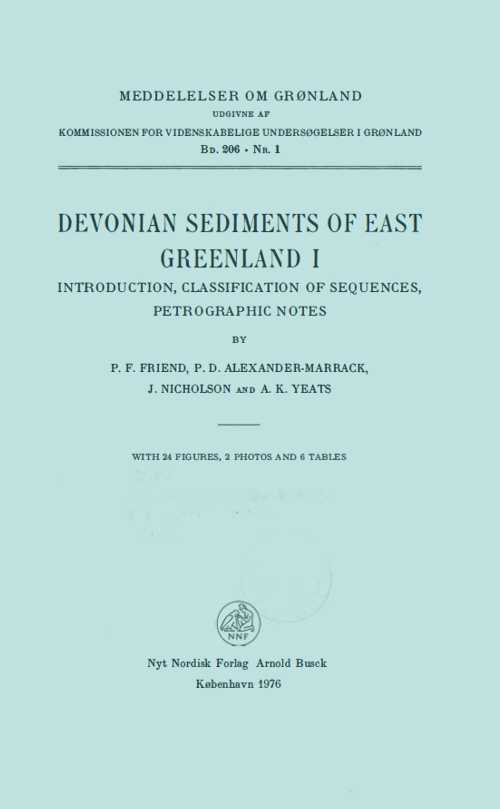Devonian Sediments of East Greenland I. Introduction, Classification of Sequences, Petrographic Notes.
DOI:
https://doi.org/10.7146/mog.v206.141445Abstract
The object of this project has been to apply the methods of detailed sedimentology to the Devonian rocks of East Greenland. This work has been based on the investigations of palaeontology, stratigraphy and structure carried out by the major series of Danish expeditions that was active in the area between 1926 and 1958.
The results of this project are being published in the various numbers of this volume. This number provides some introduction.
Four field parties spent three summers working in the area.
A standard method of recording sedimentary log observations depended on use of printed forms that were read by machine after the end of the field season. The resulting data were then available for a variety of computer-based analyses.
Multivariate analytical techniques were used in arriving at a classification of standard (usually 10 m) lengths into which all sedimentary logs were divided. The resulting thirty-one classes have been used throughout the project to describe variation in sediment types.
Certain petrographic features are described that benefit from general consideration, as compared with the local analysis presented in later numbers of this volume. These features include the types of clasts in the conglomerates and sandstones, the petrology of the rare limestones, and the petrology of concretions. The distribution and origin of colouring of the sediments are discussed, and some clay mineral analyses are presented.

Downloads
Published
How to Cite
Issue
Section
License
Coypyright by the authors and the Commision for Scientific Research in Greenland. No parts of the publications may be reproduced in any form without the written permission by the copyright owners.

